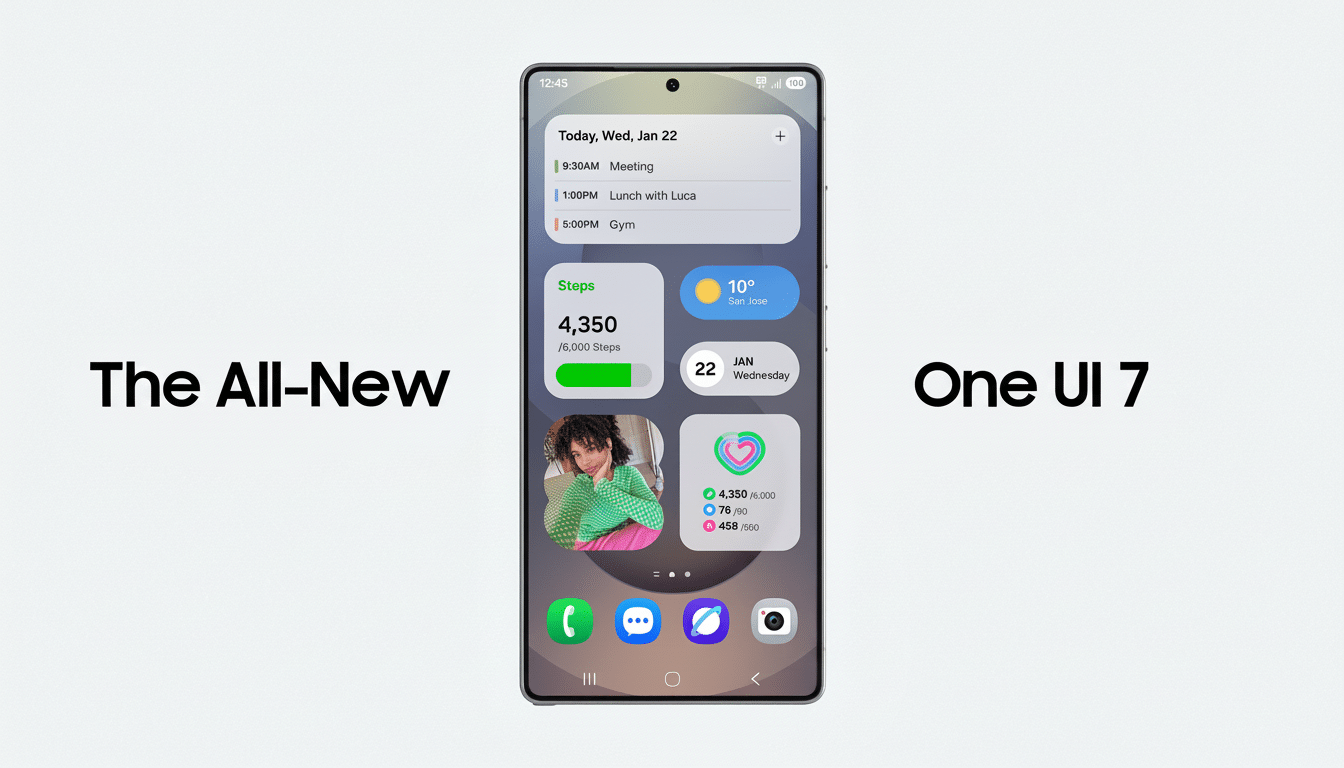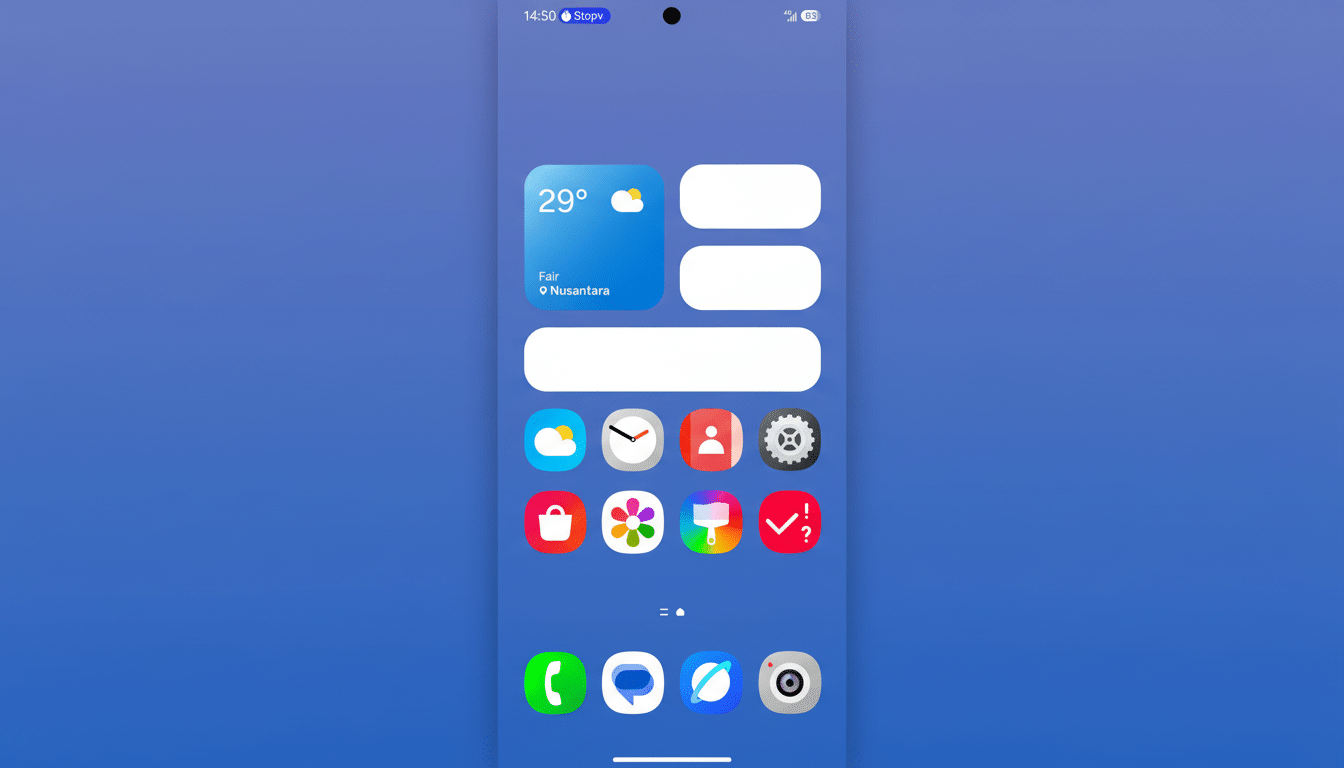Android 15-based One UI 7 is now generally available from Samsung, with a deeper commitment to on-device AI, smarter camera tools, and a sprinkling of quality-of-life upgrades that can answer the long-lamented wishes of users. The update arrived on Samsung’s most recent flagships first, then spread to older models in waves — a longer, more deliberate rollout than has been typical.
Release schedule and availability across regions and carriers
One UI 7 entered the fray with a public beta on the Galaxy S24 lineup before it arrived to ship on the current family: the Galaxy S25. A staged rollout began for eligible devices in selected regions, including various carriers. The beta phase was longer than expected, with more test builds than typically anticipated, tearing through edge-case bugs and finessing elements of AI. Samsung claims the rollout is complete in major markets, but carrier models still lag behind unlocked units.
- Release schedule and availability across regions and carriers
- Headline features you’ll notice after updating to One UI 7
- AI and camera upgrades enhancing editing and shooting
- Privacy improvements and ecosystem enhancements for Galaxy
- Supported Galaxy devices eligible for One UI 7 update
- How to update and what you’ll find in Samsung One UI 7

Headline features you’ll notice after updating to One UI 7
One UI 7 is all about the now. Now Bar exposes context-dense tools, such as Interpreter, music controls, Recorder app, Stopwatch, and other utilities — without needing to unlock in full — a convenience play for compulsive multitaskers.
The launcher switches to a vertical app drawer for speedy, one-flick scanning. Notifications and Quick Settings can be separated so pulling down from distinct areas at the top of the screen provides access to each panel. There’s also a “filter notifications” option, which quietly lumps lower-priority alerts near the bottom of the shade, in order to keep the urgent stuff front and center.
Audio is also getting smarter with loudness normalization, eliminating those jarring volume changes as media plays. Battery management advances to user-selectable charging thresholds at 80%, 85%, 90%, or 95%. Research popularized by Battery University indicates that constraining peak charge can help lithium-ion age more gracefully, and Samsung’s granular controls allow you to do so without third-party apps.
App archiving, new in Android 15’s app multitasking, lands here too; it will clear an app’s binary code while keeping it and its data — a great benefit for anyone on a smaller 128GB phone with less free space.
AI and camera upgrades enhancing editing and shooting
Samsung has revamped the camera system for speed and accuracy. Controls move closer to the bottom for more manageable one-handed use, and Pro and Pro Video modes make manual settings look less complicated. And a new variable zoom-speed control gives you the ability to make slow, steady zooms that draw viewers in (for improving transitions and adding a pro feel between shots when editing your footage).
AI-driven editing expands meaningfully. New generative tools also erase shadows when objects are removed, and Sketch to Image works with multiple sketches per photo and introduces 3D Cartoon and Watercolor styles. Portrait Studio manages portrait shots to stylize avatars, and Best Face allows you to take your expressions from a burst to save group pictures. Audio Eraser cuts down background noise in clips, and Motion Photos record 1.5 seconds before or after a shot to provide context.
More experienced shooters get a bit more with RAW (both against-all-odds compatibility and six adjustable parameters such as exposure, contrast, saturation, noise reduction). Samsung also has call recording transcription for applicable regions with 20 different languages; this might be good if you’re doing interviews or have reference notes. AI-edited images are stamped with a visible watermark, and some features demand a Samsung Account and a network connection.

Privacy improvements and ecosystem enhancements for Galaxy
Everyone is a little more private and safe. You can toggle Super HDR on and off system-wide across all your apps. The Galaxy Store now has guardian approvals for kids’ purchases, and Samsung’s call recording in the US includes audio alongside transcripts for all parties involved in a call.
Connectivity Labs unwraps new Wi-Fi filters and the ability to force 2.4GHz when setting up smart home gear — useful when IoT gizmos won’t play nice on mixed bands.
Gamers receive “Gaming motion smoothness,” an easily accessible way to target 60Hz or 120Hz in games that support high refresh rates.
On the ecosystem front, Camera Continuity and expanded Camera Sharing enable you to shoot on your phone and keep shooting photos or videos on a Galaxy Book PC, while Storage Share allows you to look through phone files using a PC, no cable required. As is the case with other cross-device systems, you’ll require the same Samsung Account along with local Bluetooth and a shared Wi-Fi network.
Supported Galaxy devices eligible for One UI 7 update
Even today, Samsung’s update policy is still one of the best in Android. Most devices that shipped with Android 13 or later are eligible, and current flagships and some mid-rangers released in 2021 on Samsung’s multi-generational OS guarantee should be next in line. That ranges from the Galaxy S25 and S24 families to recent Galaxy Z Fold and Z Flip models, and to tablet siblings as well, like the Galaxy Tab S9 series. Recent generations of popular A-series models, including both A5x and A3x versions, are also listed. Timing may vary by region, chipset model, and carrier.
How to update and what you’ll find in Samsung One UI 7
To see if you have One UI 7, go to Settings, then Software Update and press Download and install. Back up through Smart Switch, have sufficient storage, and be charged more than 50% prior to beginning. Plan on a big download — multi-gigabytes are typical — and, depending on your operating system and its updates, maybe one or two reboots. Features may vary depending on the market and carrier.
It’s a less surface-level skin experience now with One UI 7, and it feels more like a platform fit-and-finish push than a scrub-and-polish painting job. For the vast majority of Galaxy owners, it’s a meaningful leap forward — and a reminder that the length of support cycles only counts for something if every one of them moves the experience ahead.

